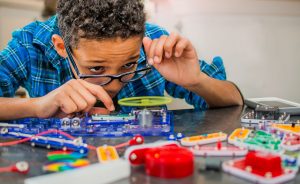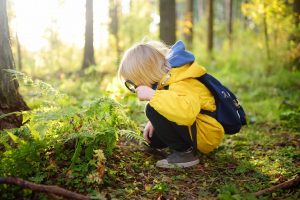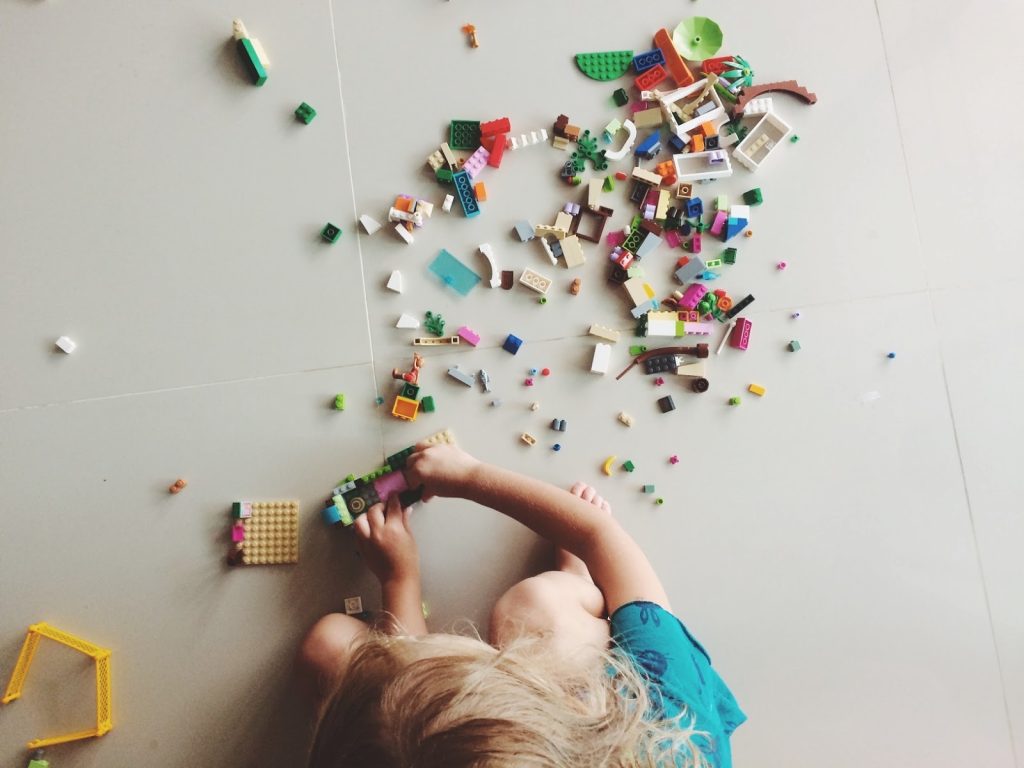Let’s check in. It’s been nearly a year since many schools have gone remote, and though some students are back to full-time in-person learning, many remain in hybrid models or full-time school-from-home. Current news reports tell us what many moms and dads already know: Distance learning isn’t as effective as an in-person education, for a variety of reasons. Despite heroic efforts by our nation’s teachers, many students struggle with an out-of-classroom approach. While we wait not-so-patiently for schools to fully reopen, there are simple ways to add a spark back into the homeschool environment. Biggest tip? Make it fun. Kids, along with parents, are taxed for a year of pandemic living. Take a break with play-based activities and see if you can re-ignite that love of learning in your home.
 Gameschooling
Gameschooling
Board games and card games are great for teaching kids how to take turns, and a whole lot more! Memory games like Eeboo’s Life on Earth teach color recognition and number sense, while card games like Proof Mental Math Magic and Zap! are a great way to practice math facts without boring worksheets or drills. High Ho Cherry O, Zingo, Obstacles, and Hoot Hoot Owl are some favorite games for preschoolers. Ticket to Ride, Scrambled States, and GeoBingo USA are great examples of games that teach geography through play. The simple deck of cards you’ve already got on hand can be used to create a great collection of DIY card games. Need tailored game recommendations based on your curriculum? Cait at My Little Poppies is the queen of gameschooling and recommends buying games secondhand when you can to save cash.
 Reading Time
Reading Time
Language acquisition begins at birth and grows steadily through a child’s first year of development. Studies show that in the first six years of life, a child’s brain learns and changes more during language acquisition than during any other cognitive ability he is working to acquire. School-age children can readily build a more robust vocabulary simply by exposure to new words through reading, conversation, movies, and music. Reading out loud to children is more than just a cozy way to wrap up the day; it actively supports language growth and vocabulary acquisition.
Do kids want more reading time than you’re up for? Try read-aloud toys like the Leap Reader or Yoto Player, which allow non-readers to have extra language exposure while still giving parents a break. Audiobooks are another fantastic resource, especially while on-the-go. Audible is a popular site for purchasing new audiobooks, but check with your local library; most have a digital collection of fantastic children’s titles to lend. Want to find the best books for every age? Read-Aloud Revival is the site you’re looking for.
 S.T.E.M. Activities
S.T.E.M. Activities
Hands-on activities are a great way to get kids thinking outside of the box, and learning about concepts like magnetism, electricity, and engineering while involved in play. Look for kits that support your child’s natural curiosities and/or current school curriculum. Building sets like K’Nex , Lego and Magna Tiles are extremely popular, and for good reason! Science-themed toys like Cool Circuits and Snap Circuits challenge students to follow directions to create increasingly complex projects. And build-your-own machines teach not only engineering skills, but also reading, maths online, and sometimes even coding skills as well. You don’t have to spend a lot on multiple S.T.E.M. sets. Mix and match between several sets to find new ways to engineer, or consider a DIY Tinker Box filled with items you probably already own.
 Nature Time
Nature Time
So much can be learned just by getting outside and experiencing the natural world! As warm weather approaches set a weekly date to spend time exploring and learning outside. Wear comfy clothes and bring a backpack filled with a journal or sketchbook, colorful pens, binoculars or magnifying glasses, a blanket, and a yummy snack. Try storytime, journaling or drawing in the great outdoors. Kids of all ages will appreciate time spent away from a computer screen, connecting with the world around them. You might even take a few minutes to practice mindfulness together; it’s good for all ages!
With any luck, our nation’s schools will be getting back to in-person learning soon. Until then, remember that you are your child’s natural teacher, and have been since they were born. For young children, learning happens throughout the day, in countless ways. Cooking, singing, reading, exercising, conversing, online maths fun, and playing games together are all fantastic and effective ways to connect with and teach your child. You might end up having a bit of fun, too!
Erin Addiego is a lifelong thrifter, writer, and mom to three living in the San Francisco Bay Area.
As an Amazon Associate, we earn from qualifying purchases.




















